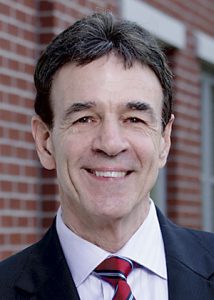By David Emanuel

Relatively few people use public transit but everyone pays for it. No public transportation system in the country is economically sustained by the fares paid by riders; all are subsidized by taxes.
That public transit must be subsidized with tax dollars is recognized by virtually all transportation professionals, but the justification for creating or expanding a transit system is economic development. In essence, “If you build it, few will come but many will spend.”
That point is well documented with the Charlotte, N.C., light rail system. A ride on the city’s 18.6-mile long LYNX Blue Line leaves no doubt that there is development along the system.
Construction of housing and commercial buildings is rampant along the newly opened 9.3-mile northern extension and new development continues on the existing southern section.
But Charlotte’s situation is unique. The first section, opened in 2007, was largely built on an abandoned freight line that ran through the heart of the city. Property acquisition and construction costs were comparatively low. The northern extension opened in March 2018 was considerably more expensive, costing $1.1 billion – $118,279,569 per mile. Funding consisted of a $580 million federal grant, $299 million from the state and $280 million from the city of Charlotte.
Economic justification for the extension was also unique. Much of the adjacent property comprised long-abandoned textile mills and older, run-down housing with little value. With the opening of the light rail line, these sites became magnets for developers looking for cheap land.
Consequently, as was the case when New York City built its subway system in the early 1900s, much of Charlotte’s light rail system is driving development.
In Atlanta, the situation is quite different. Existing development is driving transit. That translates to relative high costs for both land acquisition and construction of a rail system. At an optimistic estimate of $250 million per mile to construct heavy rail service, the proposed four-mile extension from Doraville to Norcross will cost $1 billion. A more accurate estimate is that this proposed extension will cost $1.25 billion to $1.5 billion.
There is a better, more economically sensible alternative: bus rapid transit (BRT).
Often referred to as “light rail on rubber tires,” a BRT system can be built at a fraction of the cost of the estimated $125 million per mile estimate for light rail, or the $250 million per mile estimate for heavy rail.
Another advantage of BRT is that much of the infrastructure is already in place. Rapid transit buses could begin operating tomorrow, without incurring any construction costs, in the managed (toll) lanes south of Atlanta on Interstate 75 and to the northeast on I-85.
With no intermediate stops, service would be extremely limited, but the point to consider is that even without them, commute times for many people working in downtown Atlanta could be reduced if they drove a few miles to a BRT terminus in Henry or Gwinnett counties and boarded a Rapid Transit Bus. While not a permanent solution, it’s a quick, flexible, low-cost start. And service could begin immediately.
BRT also proves to be the better, more economically sensible option when population density is considered. Atlanta’s population density, which is considerably higher than that of the surrounding counties, does not justify heavy rail, so it is pure folly to extend it into those lower-density counties.
On the other hand, the host of rubber-tire options that exist (BRT, bus, flex, autonomous vehicle) offer lower construction costs and lower operating costs. And where costs are lower, service can extend further and farther.
Most importantly, BRT is less of a burden on taxpayers, in the short term and in the long term.
[This commentary by Dave Emanuel, a Snellville City Council member, was written for the Georgia Public Policy Foundation. The Foundation is an independent, nonprofit think tank that proposes market-oriented approaches to public policy to improve the lives of Georgians.]











Leave a Comment
You must be logged in to post a comment.